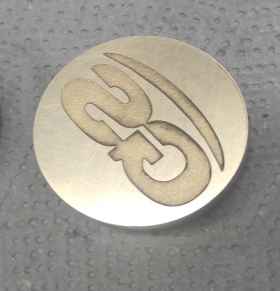USEFUL INFORMATION ABOUT THE LAPPING
Lapping as a process is surface treatment using free abrasives. In engineering, this method is the slowest one, but also the most accurate machining method. The lapping process can be used not only for flat surfaces, which are the most common (for example, in the production of various seals, where high demands on flatness are needed. Here is possible to reach the flatness of around 1 micron), but also for spherical surfaces, or in the production of spherical inserts. Also is possible to lap pairs of tools working together so that their common surfaces are as compatible as possible. Various shaped surfaces can be also lapped, where in such cases over a larger shaped surface is moving smaller lapping tool. A wide variety of materials can be lapped: various types of steel, up to highly hardened, sintered carbides, glass, etc. Because of bland material removal during lapping, the process itself takes some time. To speed up the lapping process is necessary to use optimal procedures, abrasives, and lapping tools. To achieve optimal surface quality in possible shortest time, is necessary to work many times in several steps. By working with abrasives with larger grain sizes, more material is removed from the lapped surface. By switching to a smaller grain size you can achieve a better surface roughness (given for example with the Ra value). Sometimes after the lapping process is followed the polishing process, where the roughness of the surface is no longer improved, but on the surface with the good Ra only the gloss of the surface is enhanced. |
The time saving is also affected by the choice of the lapping method, which can be divided into machine lapping or manual lapping.
Therefore you can use lapping for:
- for fine surface treatments
- when working on sealing surfaces
- when working on sharp cutting edges
- for achieving flat surfaces without tension
- when creating auxiliary surfaces
- for improving the wear resistance of surfaces
Generally applies the following:
- If we improve the quality of the surface of any tool, we will increase its service life
- If we achieve a smoother surface, then less dirt can occur on such a surface, and will be more accepted in the healthcare or food industry
At the beginning of this article, we mentioned that by lapping you process the surface using free abrasives. Depending on the type of abrasive you can divide lapping into conventional lapping and diamond lapping. What is the difference between them?
By conventional lapping, abrasive (based on aluminum oxide or silicon carbide) is applied using a carrier with lapping oil to the processed surface, and the particles move freely in all directions. The result of the surface by conventional lapping is always matte gray. Its advantage is the lower price of the abrasive, but the disadvantages are the large variance of the size of the abrasive grains, less hardness, less service life, high consumption, and thus waste.
By diamond lapping, diamond abrasive particles are used for material removal. With a finer diamond grain size, you will achieve a lower surface roughness value. The result of the surface by diamond lapping is shiny. The advantages are a very narrow variance of the diamond grains, very high hardness, and the service life. The disadvantage is the higher price of the abrasive, but on the other hand, the overall lapping process is much cleaner.
In conclusion, we would like to add that by choosing the right lapping procedure, the special abrasive, and the right tool, you can achieve the desired quality surface according to your expectations. If you don’t know how to deal with lapping, don`t hesitate to contact us and we will be happy to help you, or you can use our professional training courses for lapping. You can also use our machine lapping services.



